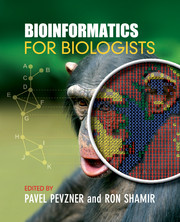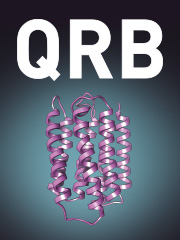Models of Life
Reflecting the major advances that have been made in the field over the past decade, this book provides an overview of current models of biological systems. The focus is on simple quantitative models, highlighting their role in enhancing our understanding of the strategies of gene regulation and dynamics of information transfer along signalling pathways, as well as in unravelling the interplay between function and evolution. The chapters are self-contained, each describing key methods for studying the quantitative aspects of life through the use of physical models. They focus, in particular, on connecting the dynamics of proteins and DNA with strategic decisions on the larger scale of a living cell, using E. coli and phage lambda as key examples. Encompassing fields such as quantitative molecular biology, systems biology and biophysics, this book will be a valuable tool for students from both biological and physical science backgrounds.
- Encompasses fields such as quantitative molecular biology, systems biology and biophysics, providing a valuable tool for students from both biological and physical science backgrounds
- Emphasises simple lessons from complex biological topics, covering gene regulation, feedbacks, genetic switches, epigenetics and networks
- Features over 160 questions placed throughout the chapters, along with summary sections to explain key concepts
Reviews & endorsements
'Models of Life is an insight of a physicist into biological regulatory mechanisms. It provides a quantitative basis of how many of the biological systems work. Using simple logic and mathematics, Kim Sneppen, a world renowned scientist and thinker, has created a must-read for investigators in quantitative biology. The book provides a clear explanation of triumphant experiments in a lucid way with crisp figures. The brilliance of the author's analytical mind is on display when one sees how he explains some of the exciting paradigmatic regulatory systems, beginning with the basics of molecular biology. The book is also replete with intellectually challenging problem questions for readers, making the book an excellent text for students as well.' Sankar Adhya, National Cancer Institute, Maryland
'Kim Sneppen's insightful book covers lots of ground in describing biological systems at different time and length scales and levels of resolution. Its different chapters unified by the author's modeling philosophy are sure to be of interest to a very diverse group of readers … Readers interested in agent-based modeling will find it applies to systems as diverse as epigenetics, propagation of information and evolutionary patterns in fossil records. Dedicated chapters combine biophysics and systems biology of gene regulation and protein-protein interactions. The book provides especially deep coverage of biology of phages, bacteria and their interactions within ecosystems. It would make an excellent textbook for one or even several university courses on systems or evolutionary biology. In fact when teaching these courses I will use it heavily myself and recommend it to my students.' Sergei Maslov, Brookhaven National Laboratory, New York
'Sneppen has written a wonderfully friendly and readable book on the principles of biological cells for physicists. He presents concepts and models at a level that is sufficiently deep to convey powerful insights, while keeping the math to the absolutely minimal level that is needed to be clear and informative. This book is pioneering in covering scientific terrain that is largely not covered much elsewhere, but will be in the future - including feedback, regulation, networks, bistability in the lambda-phage switch, DNA looping, diffusion in cells, epigenetic regulation and cellular evolution. I highly recommend it as a deeply insightful book about the principles of biology and a great read.' Ken Dill, Laufer Center, Stony Brook University
Product details
October 2014Hardback
9781107061903
350 pages
253 × 180 × 20 mm
0.86kg
25 b/w illus. 193 colour illus. 5 tables 165 exercises
Available
Table of Contents
- Preface
- 1. Life from a physics perspective
- 2. E. coli as a model system
- 3. Dynamics of regulatory links
- 4. Statistical mechanics of phage λ
- 5. Diffusion and randomness in transcription
- 6. Stochastic genes and persistent decisions
- 7. Gene regulation and epigenetics in cis
- 8. Feedback circuits
- 9. Networks
- 10. Signalling and metabolic networks
- 11. Agent-based models of signalling and selection
- 12. Competition and diversity
- 13. Evolution and extinction
- Appendix
- References
- Index.





